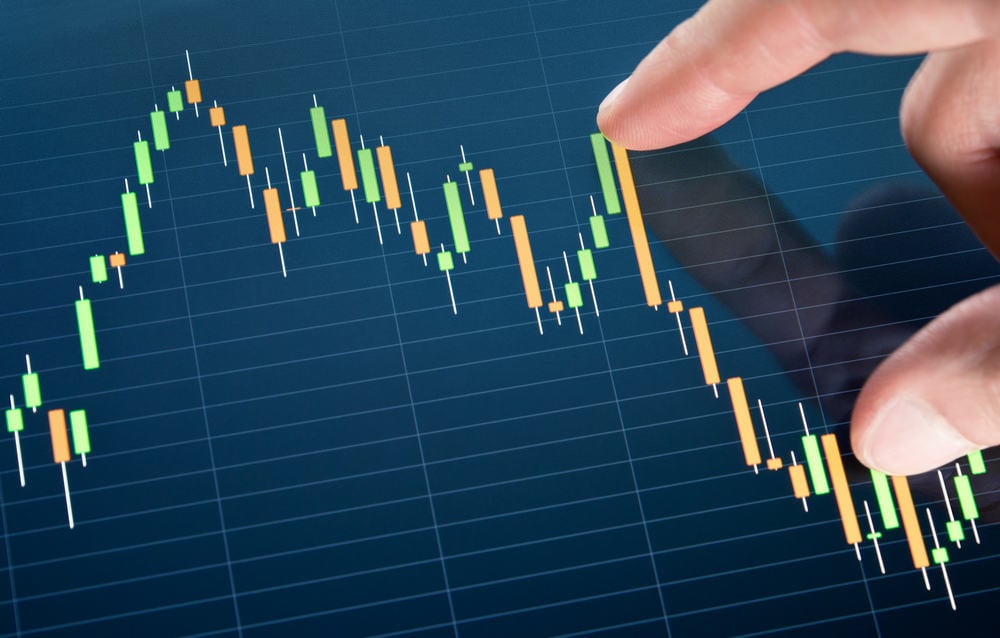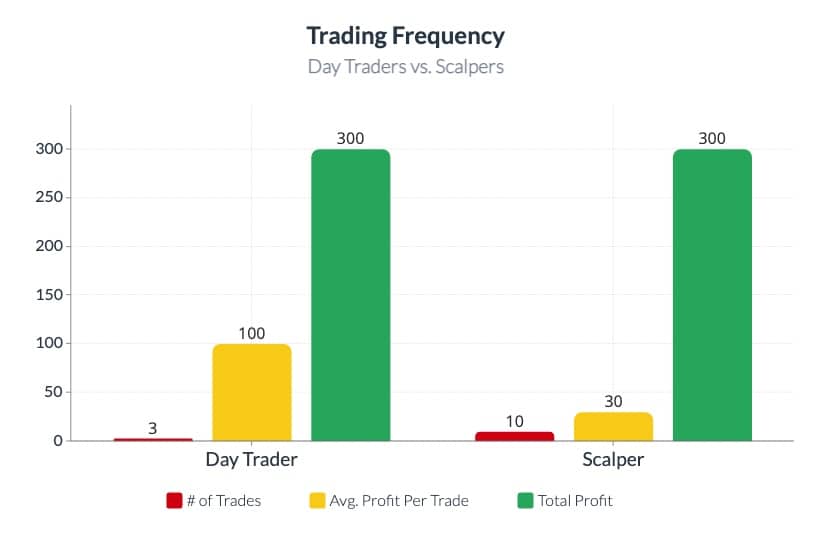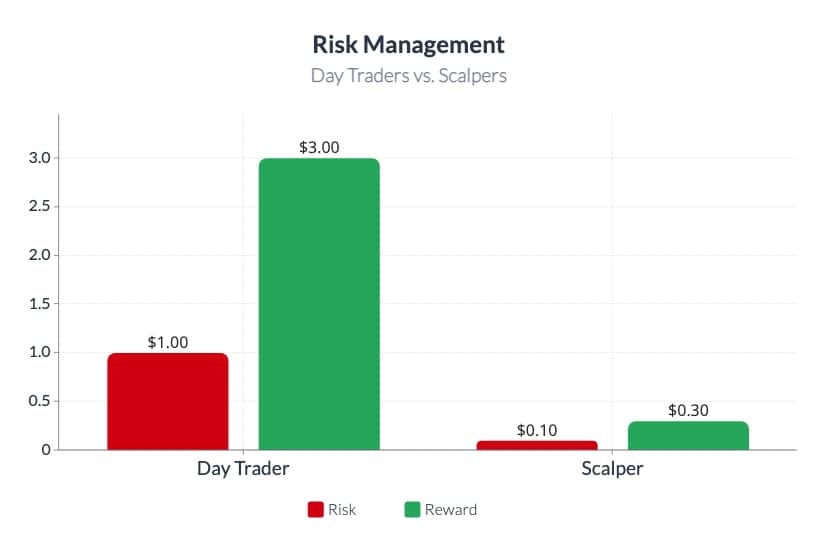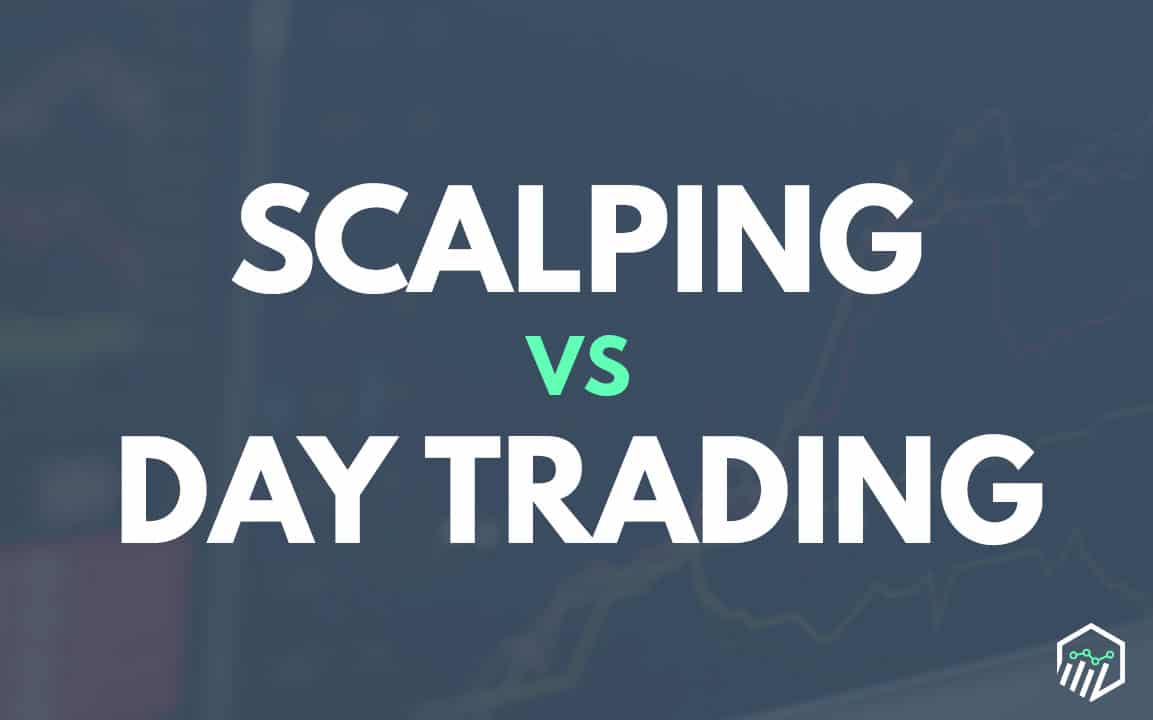[ad_1]
Scalping and day trading are often mixed up by new traders because they share a lot in common. In fact, scalping is a type of day trading. Day traders may use a scalping strategy to profit from the market, but there are many other day trading strategies available as well.
In this guide, we’ll explain the similarities and differences between scalping vs. day trading so you can decide what type of trading is best for you.
What is Day Trading?
Day trading is an umbrella term that refers to any type of active intraday trading. Any trading strategy that involves opening and closing trades in a single market session can be considered a form of day trading. Common day trading strategies include momentum trading and news trading.
The goal of day trading is to profit off of short-term changes in the price of stocks or other assets. Day traders aren’t worried about whether a company has a good business model that will drive price appreciation far into the future. Instead, they’re mainly interested in whether a stock’s price will go up or down over the next few minutes or hours.
What is Scalping?
Scalping is a specific trading strategy used by some day traders. Scalping as a strategy is characterized by taking large positions that capitalize on very small changes in a stock’s price. For example, a scalper may trade $10,000 at a time and sell after the price of a stock moves just one or two cents. A scalping trade may be opened and closed in the span of a few seconds to a few minutes.

Importantly, this strategy is low risk, low reward. Scalpers may only risk $0.02 per share on a trade with a profit target of $0.06 per share. Trading 100 shares this way is only enough to earn $6.
Scalpers often place dozens of these trades per day. While the profits from each individual trade are usually small, they can add up by the end of the day.
Scalping vs. Day Trading: Differences
While scalping is a form of day trading, the term day trading is often used synonymously with momentum trading. Momentum trading is another specific day trading strategy that involves trading stocks as they’re trending strongly in an upward or downward direction.
| Day Trading | Scalping | |
|---|---|---|
| Profit Target | A few percent+ | A few cents+ |
| Position Size | Smaller | Bigger |
| Trade Frequency | Less Frequent | More Frequent |
| Risk Management | Risk Minimized by Position Size | Risk Minimized by Holding Time |
Profit Target
Scalping and momentum trading are very different in terms of the profit targets involved. In a scalping strategy, traders may enter a position with a profit target of just a few cents per share, or a fraction of a percent. In a momentum day trading strategy, the profit target is often several percent.
So, the potential gain from any single momentum day trade is often much higher than the potential gain from any one scalping trade.
Position Size
In part because of the difference in profit targets between scalping and momentum day trading strategies, the two strategies typically involve very different position sizes. Scalpers usually trade large positions – often thousands of shares per trade. If the profit target on a trade is $0.05, earning a total potential profit of $50 requires trading 1,000 shares.
Momentum traders usually open smaller position sizes. If the profit target on a trade is $5 per share, for example, then a trader only needs to trade 10 shares to achieve a potential $50 profit.
Trading Frequency
Another important difference between scalping and day trading with a momentum strategy is how frequently trades are placed. Scalpers may place dozens of trades per day, each with a relatively modest potential profit. There are many opportunities for scalping during each market session since the price movements involved are relatively small.

Momentum day traders typically place only a few trades each day. The potential profit and loss from each trade is greater, and there are usually fewer actionable setups to trade each day.
🏆 Top Rated Services 🏆
Our team has reviewed over 200 services. These are our favorites:
Risk Management
Scalpers and momentum day traders also take different approaches to risk. In a scalping strategy, traders avoid risk by holding positions for as short a time as possible and looking for small movements that are highly likely to happen.

In a momentum trading strategy, day traders manage risk by taking smaller positions with each trade. They also look for favorable risk/reward opportunities. That is, they may risk $1 to make $4 on a trade, but they may not want to risk $1 to make $2 on a trade.
Scalping vs. Day Trading: Similarities
Momentum day trading and scalping do have many similarities. Both strategies seek to profit off of intraday price action. The goal of each strategy is to trade for a profit rather than to find strong companies to invest in.
To achieve this, both day trading and scalping rely on technical analysis. Traders use indicators, candlestick patterns, and other technical analysis tools to determine if and when a price movement is likely to occur.
Importantly, while day trading and scalping strategies use different risk management approaches, these strategies only work when traders manage their risk effectively. Traders don’t need to win every trade to make a profit, but they do need to keep their losses as small as possible.
Conclusion: Scalping vs. Day Trading
Scalping is a type of day trading, but there are important differences between scalping and momentum day trading strategies. Scalping involves taking large positions to realize profits on small price movements, while momentum day trading involves smaller positions while a stock’s price is trending strongly up or down. Both scalping and day trading rely on technical analysis and require effective risk management to succeed.
[ad_2]
Image and article originally from daytradereview.com. Read the original article here.

